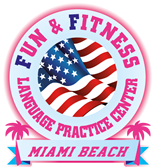The Common European Framework of Reference for Languages (CEFR) – in English Common European Framework of Reference for Languages (CEFR), but sometimes referred to simply as Framework – is a descriptive system used to evaluate the skills achieved by language learners European foreigner, as well as for the purpose of indicating the level of language teaching in the most disparate fields.
It was developed by the Council of Europe as a major part of the Language Learning for European Citizenship project between 1989 and 1996. Its main purpose is to provide a method for ascertaining and transmitting knowledge that applies to all the languages of Europe. In November 2001, a Council of Europe resolution recommended using the CEFR to build language ability validation systems.

The six proficiency levels (A1, A2, B1, B2, C1, C2) and the three intermediate levels (A2+, B1+, B2+) articulated in the CEFR are used throughout Europe and other continents as benchmarks to provide language teachers with a reference model for the preparation of teaching materials and for the assessment of language skills.
The certifying bodies of the various European languages have now completed the transition to the new denominations of the levels of linguistic knowledge for the certifications that issue – or alternatively provide – conversion tables between the denominations of their own levels and the standard ones of the Common European Reference Framework. Furthermore, even some certifying bodies from non-European countries have already launched projects to harmonize their language levels with those of the CEFR.
LEVELS
The Common European Framework of Reference distinguishes three broad ranges of competence (“Basic”, “Autonomy” and “Mastery”), each in turn divided into two levels for a total of six overall levels, and describes what an individual is able to do in detail at each level in the different areas of competence: written comprehension (understanding of written assignments), oral comprehension (understanding of spoken language), written production and oral production (oral communication skills).
The levels are identified with letters from “A” to “C” with increasing quality (A=minimum, C=maximum) subdivided by numbers side by side from “1” to “2”, always with increasing quality (1=minimum, 2= maximum): the minimum level is therefore “A1”, while the maximum level is “C2”.
A base
- A1 – Basic level
Everyday expressions and basic phrases intended to satisfy needs of a concrete type are understood and used. Can introduce themselves and others and can ask and answer questions about personal details such as where you live, people you know and possessions. It is easy to interact as long as the other person speaks slowly and clearly and is willing to help. - A2 – Elementary level
Communicate in simple and habitual activities that require a simple exchange of information on familiar and common topics. Can describe in simple terms aspects of his/her life, immediate environment; can express immediate needs.
B – Autonomy
- B1 – Intermediate or ‘threshold’ level
Can understand the key points of familiar topics relating to school, leisure, etc. He knows how to move with ease in situations that may arise while traveling in the country whose language he speaks. Can produce simple related text on topics that are familiar or of personal interest. Can describe experiences and events, dreams, hopes and ambitions, as well as briefly explaining the reasons for his or her opinions and plans. - B2 – Upper Intermediate
Can understand the main ideas of complex texts on both concrete and abstract topics, as well as technical discussions in their field of specialisation. Can interact with a certain fluency and spontaneity which makes natural interaction with native speakers possible without straining the interlocutor. Can produce clear, detailed text on a wide range of subjects and can explain a point of view on a topic giving the advantages and disadvantages of various options.
C – Mastery
- C1 – Advanced level or “autonomous efficiency”
Can understand a wide range of complex and long texts and can recognize their implicit meaning. He expresses himself with fluency and naturalness. Use language flexibly and effectively for social, professional and academic purposes. Can produce clear, well constructed, detailed text on complex subjects, showing a confident control of text structure, connectors and cohesion elements. - C2 – Level of command of the language in complex situations
Can easily understand practically everything heard and read. Can summarize information from a variety of sources, both spoken and written, restructuring topics into a coherent presentation. Can express himself spontaneously, very fluently and precisely, identifying the subtlest nuances of meaning in complex situations.
CERTIFICATION BODY
Fun & Fitness Language Practice Center © as well as helping you in language preparation is also a CERTIFIER BODY for learning the English language on behalf of:
- Learning Resource Network for ESOL certification available from CEFR level A1 to C2 and valid throughout Europe; ESOL certification is essential if you want to go to university abroad or if you are a professional and want to practice abroad; obviously it serves any purpose in Italy.
- ANGLIA
- BSE
and learning the Italian language for foreigners on behalf of:

Fun & Fitness Language Practice Center ©
in collaboration with Friends of Europe A.P.S.
Via Canal Grande, 46 – 48018 Faenza (Ravenna)
Fiscal code: 90029010395
VAT number: 02423610399
email info@fflanguagecenter.com
